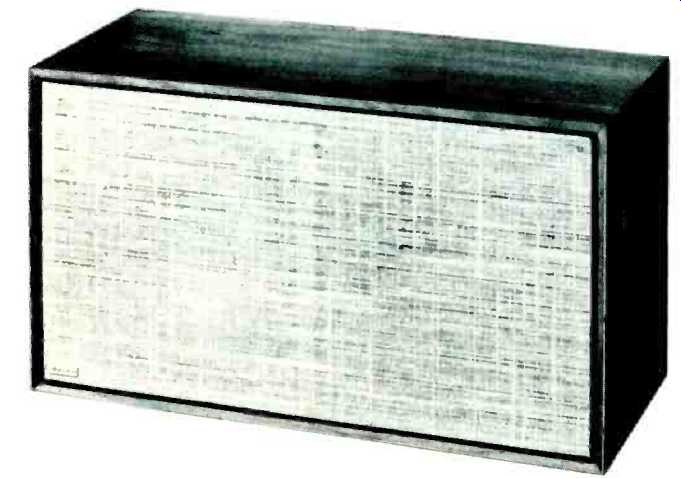
MANUFACTURER'S SPECIFICATIONS:
Bass Speaker (woofer): 10 inch. Treble (tweeter): 1 1/2 inch dome.
Crossover: 1800 Hz.
Cabinet: Oiled walnut finish.
Dimensions: 12 1/2 by 22 by 10 inches deep.
Price: $120.
The Dyna 35 uses very similar speakers to the popular A-25 but the cabinet is somewhat larger. High frequencies of the 25 tended to roll off slightly from about 2,500 and the overall sound was smooth but a trifle distant; this was especially noticeable at low volume levels. The 35 has a more linear response and the sound quality is more "forward" but just as smooth. The larger cabinet has enabled the bass to be extended almost another octave. System resonance is about 55 Hz and the enclosure is sealed. The smaller air volume of the 25 made it necessary to use a resistance-loaded port to get a reasonable bass response.
The 35 actually uses two compartments, one venting to the other. Dynaco calls this "dual spectrum damping" claiming that it provides critical damping at resonance plus the low distortion benefits of the sealed enclosure at the very low frequencies.
A 5-position high frequency control is provided at the rear and there is provision for wall mounting. Cabinet finish is walnut and the beige linen grille cloth is replaceable.
Measurements
Figure 1 shows the frequency response taken with one-third octave pink noise. B is taken with the high frequency control in the normal position and A and C at maximum and minimum respectively. Dispersion at 30 and 60 degrees is shown in the lower curve. Apart from the tiny dip at 1800 Hz, the response is sensibly flat. The impedance characteristics are shown in Figure 2 and it will be seen that the lowest point is 8 ohms. This falls to 7 ohms with the treble control at maximum. Tone burst responses at 100 Hz, 500 Hz and 5 kHz are given in Figure 3. Figure 4 shows low frequency distortion and SPL measurements for inputs of 5 and 15 watts.
The system would handle a continuous power of 62.5 watts at 40 Hz without distress and 120 watts at 70 and 100 Hz.
White noise tests showed a very low coloration.
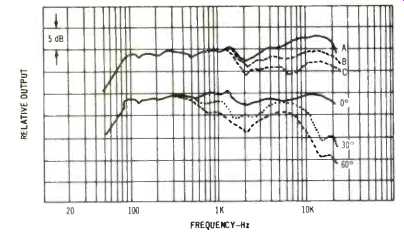
Fig. 1--Response measured with one-third octave pink noise. B was taken with
the high frequency control in the normal position; A and C at maximum and minimum
respectively.
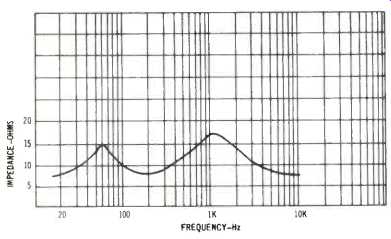
Fig. 2--Impedance characteristics.
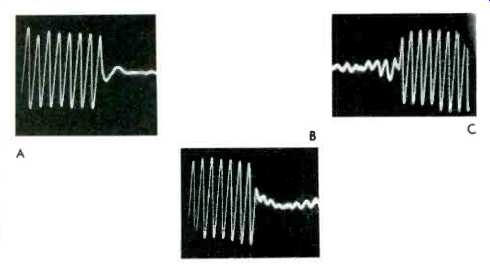
Fig. 3--Tone-burst responses. A is 100 Hz; B is 500 Hz; C is 5 KHz.
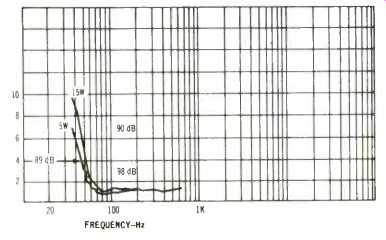
Fig. 4--Low frequency distortion and some SPL measurements.
Listening Tests
If we had to describe the performance of the A-35 in one word, that word would be "unobtrusive". A loudspeaker is not a musical instrument, it should reproduce what is applied to it without adding or taking away. Some designers opt for a "warm sound" by having a broad peak in the 80 to 200 Hz region; others prefer the "West Coast Sound" which involves a peak or series of peaks in the 2 to 6. kHz range to give "presence". In a dealer's showroom, they can make very impressive sounds with the appropriate program material, but the buyer will invariably be disappointed when he gets them home. In contrast, what is called the " New England" sound is neutral with a minimum of coloration. Now, the Dynaco speakers are made in Denmark--a long way from Boston, Mass., but they could certainly fall into this neutral sound category--in fact, many European speakers do.
Sensitivity of the A-35 is about average and we found a power of 20 watts per channel adequate for our listening room. We used a Pioneer 8000A 4-Channel receiver for some of the tests with two A-10's at the rear. This combination worked beautifully--although it would be even better with two 25's or 35's at the rear.
Summing up: the A-35 joins the top six bookshelf systems in this price range.
--T.A., G. W.T.
(adapted from Audio magazine, Jun. 1973)
Also see:
Dynaco A-25XL Loudspeaker (Equip. Profile, Nov. 1976)
Design Acoustics D-12 speaker (Apr. 1973)
University "Project M" Speaker System (Apr. 1970)
Electro-Voice Interface:A speaker (Mar. 1976)
Dynaco AF-6 AM/FM Tuner (Equip. Profile, Sept. 1974)
Dynaco Stereo 70 Series II Tube Amp (Nov. 1992)
Microstatic Full-Range Loudspeaker (Jun. 1973)
= = = =